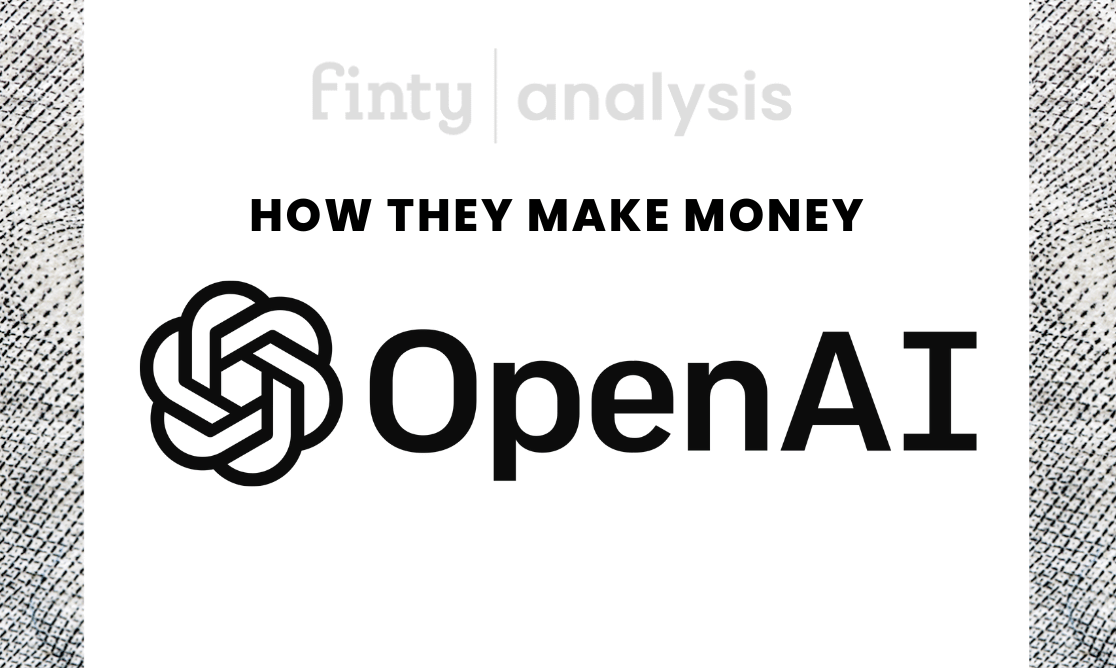OpenAI's mission is to create and promote safe, transparent, and beneficial AI for all of society. To achieve this goal, the organization has developed a number of groundbreaking technologies, including the wildly popular ChatGPT and the GPT language models that power its conversational AI, reinforcement learning algorithms, and robotic systems.
None of this comes cheap. Here's how the AI startup makes money.

Coming up next
What does OpenAI do?
OpenAI's founding team is a who's who of Silicon Valley luminaries, including Elon Musk (who resigned given a conflict of interest with Tesla), Sam Altman of YCombinator fame, and LinkedIn's Reid Hoffman.
The company’s primary focus is developing cutting-edge AI technology and making it accessible to the public. The company researches various areas of AI, including machine learning, computer vision, and natural language processing. OpenAI also offers several AI-based products and services, such as the GPT-3 language model, used for natural language processing tasks such as text generation and translation.
In November 2022, OpenAI released ChatGPT, a revolutionary generational AI service that broke records as the fastest-growing app in history.
How does OpenAI work?
OpenAI operates on a research and development model, emphasizing open-source software and sharing its findings with the public. The company employs a team of AI researchers and engineers who work together to develop new AI technology and improve existing technology. OpenAI also collaborates with other organizations, such as universities and other research institutions, to further its research efforts.
In terms of product and service offerings, OpenAI uses its AI technology to offer products, such as ChatGPT, GPT-3, DALL-E, and OpenAI API.
GPT-3 is a language model that can generate human-like text, DALL-E is a model that can generate images from text, and OpenAI API is a service that allows developers to access OpenAI’s AI models and integrate them into their applications.
How OpenAI makes money
OpenAI makes money through licensing its products and services, subscriptions, partnerships and collaborations, and investments.
Licensing
The overwhelming share of revenue that OpenAI generates comes from the licensing fees it charges those using its models or products. OpenAI monetizes those offerings on a per-unit basis. For example, the Dall-E image generation model is priced on a unit basis of $0.016 to $0.020 per image.
Meanwhile, language models are priced using tokens. The models are priced on a token basis, where 1,000 tokens are equal to about 750 words. By plugging itself into, for example, Microsoft’s existing customer ecosystem, OpenAI can significantly raise the distribution of its models, which consequently increases the revenue it generates from licensing fees.
Subscriptions
The most recent monetization that OpenAI realized was when it introduced a premium version of their chatbot called ChatGPT Plus for $20 per month. The subscription gives users preferential access to compute. Meanwhile, free users can still access ChatGPT, but it is prone to downtime when demand is high.
Interestingly, OpenAI plan to keep ChatGPT available free of charge, ostensibly to gather feedback to improve the output of its language models. Clever move.
Partnerships and collaborations
OpenAI also generates revenue through partnerships and collaborations with other organizations, such as by licensing its technology to other companies. Their most notable partnership is with Microsoft, which pumped OpenAI with $10 billion in 2023.
Investments
OpenAI invests in AI-based startups using the OpenAI Startup Fund, which the firm launched in May 2021.
The size of the fund is equal to $100 million. At launch, founder and CEO Sam Altman said, “This is not a typical corporate venture fund. We plan to make big early bets on a relatively small number of companies, probably not more than 10.” OpenAI receives an equity stake in exchange for its investment, and it then makes money by selling its shares at a higher price than they were initially purchased for.
Future growth engine
OpenAI’s potential for future growth is significant, as the demand for AI technology is rapidly increasing. One potential area of growth for the company is in developing more advanced AI models, such as those that can perform tasks beyond the capabilities of current AI technology. OpenAI may also expand into new markets, such as healthcare and finance, to offer AI-based products and services to these industries. The question is whether OpenAI will remain largely B2B or whether it will develop its own consumer-facing brand.
Competitors
OpenAI’s main competitors in the AI industry include Google, Microsoft, Facebook, Amazon, and IBM. Apple may also be a competitor should they ever give users a more compelling reason to invoke a conversation with Siri, their AI assistant.
These companies are, for the most part, developing their own AI technologies to augment their end products. In the case of Google, for example, that means adding conversational AI to search results, whereas Microsoft intends to add AI throughout its suite of services.
Given how much capital these competitors can sink into AI R&D, OpenAI may be best placed as a smaller and more nimble innovator that makes money from licensing its technology to larger incumbents.

